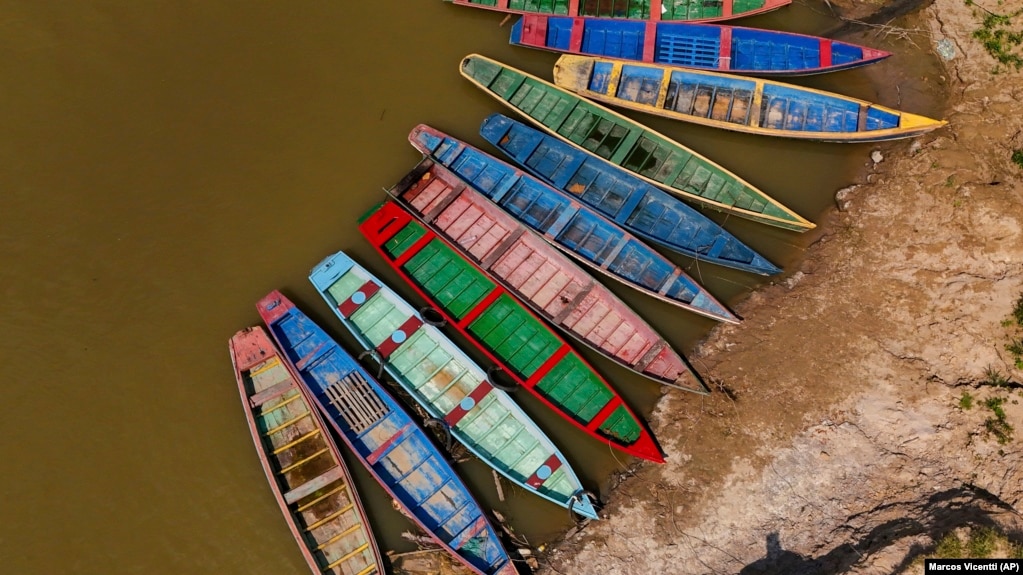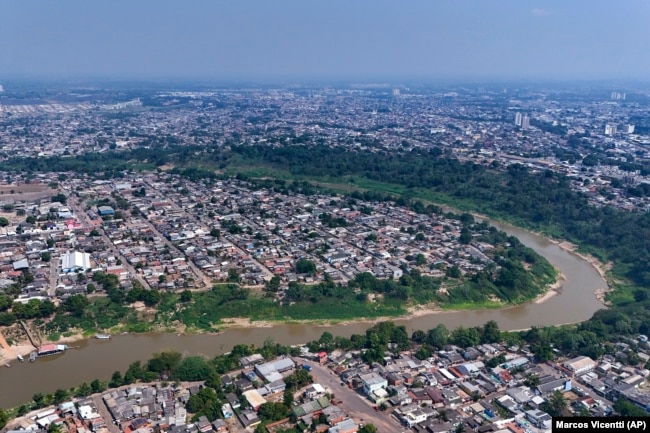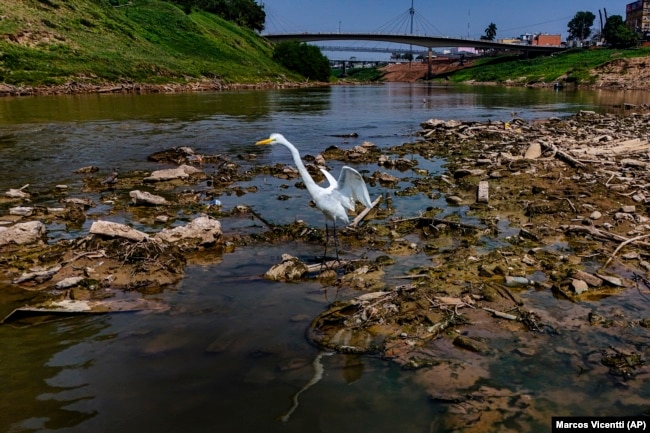AUDIO
Severe Drought Returns to the Amazon Earlier Than Expected

The Amazon Basin is facing one of the most severe droughts in recent years, the Amazon Cooperation Treaty Organization (or ACTO) said.
As the dry season begins in August, many of its rivers are already at very low levels. And several South American countries are preparing to deal with increasing forest fires, water shortages and higher food prices.
In several rivers in the southwestern Amazon, water levels are the lowest on record for this time of year. August and September are usually the driest months. That is also when most fires happen. The ACTO says the most affected countries so far this year are Bolivia, Peru and Brazil.
Recently, Brazil’s federal water agency declared a water shortage in two major basins, Madeira and Purus. Together, they cover an area nearly the size of Mexico. And in Brazil’s Acre state, the drought has already caused water shortages in the city of Rio Branco. In June, neighboring Amazonas state declared a water shortage in 20 of its communities.

The declared shortages came more than two months earlier than last year when most of the Amazon Basin suffered its worst drought on record.
The 2023 drought isolated people who depend on water for transportation. Smoke from forest fires made the air in cities unhealthy to breathe. And high water temperatures killed more than 100 river dolphins.
The Madeira River is one of the largest rivers in the Basin. It is also an important waterway for soybeans and fuel. The river’s level dropped below three meters near Porto Velho on July 20. In 2023, that happened nearly a month later on August 15.
The low water level means fewer boats could travel the river at night. And two of Brazil’s largest hydroelectric plants may halt production, as happened last year.
In the Amazonas town of Envira, nearby rivers have become too shallow to travel by boat. Local officials have asked old people and pregnant women to move from communities by the river to the city center. This is because medical help may not be able to reach them.

The low water is also affecting food prices. Farmers who produce cassava flour cannot get it to market. As a result, this important Amazon food has more than doubled in price, local government says.
Another worry is fire. There were around 25,000 fires from January until late July — the highest number for this period in almost twenty years. In the Amazon, fires are mostly human-made. People use the fires to manage fields and clear areas where trees have been cut down.
Drought is not the only weather event affecting areas in Brazil’s Acre state. Severe flooding hit 19 of the state’s 22 communities last year.
“It’s been two years in a row of extreme events,” said Julie Messias, Acre’s secretary of environment. She added, “The result is that we are facing a threat of food shortage. First, the crops were flooded, and now the planting period is very dry.”
The Amazon is the world’s largest river system, carrying 20 percent of the world’s river water into the oceans each year.
_________________________________________________
Words in This Story
basin -n. the land around a river and the area from which water flows into it
drought -n. an extended period of very dry weather
isolate -v. to keep physically separated and away from other people or things
shallow -adj. not deep
in a row -prep. phrase consecutively
https://learningenglish.voanews.com/a/severe-drought-returns-to-the-amazon-earlier-than-expected/7730562.html